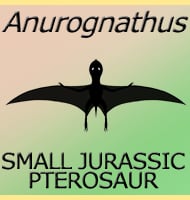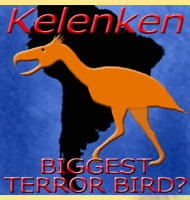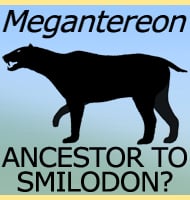In Depth
Venenosaurus, meaning ‘poison lizard’ acquired its name from being discovered in the Poison Strip Member of the Cedar Mountain Formation, while the type species, V. dicrocei, is in honour of Tony DiCroce, the person who first discovered the remains. Other sauropod dinosaurs from the Cedar Mountain Formation, albeit from different Members, include Abydosaurus, Cedarosaurus and Brontomerus. Out of these, Cedarosaurus seems to be the most similar to Venenosaurus.
Venenosaurus was a typical brachiosaurid sauropod which may have spent most of its time browsing upon high growing vegetation. The authors of the 2001 description of Venenosaurus however noted that while appearing robust, the radius (one of the lower fore arm bones) was surprisingly slender for its type of sauropod. Out of the Cedar Mountain Formation, only Cedarosaurus is known to have more gracile lower fore leg bones than Venenosaurus.
Aside from sauropods, Venenosaurus would have likely shared its environment with ornithopod dinosaurs such as Planicoxa, also known from the Poison Strip Member. It should also be remembered that the Poison Strip member is sandwiched between the Yellow Cat and Ruby Ranch Members of the Cedar Mountain Formation, and these also contain armoured nodosaur dinosaurs like Gastonia. So, it’s probable that they were also around in the time that the Poison Strip Member was laid, but if they were preserved is a different matter.
Possible predators of Venenosaurus might have been large dromaeosaurid dinosaurs like Utahraptor. Although Utahraptor remains from the Poison Strip Member have been considered to be indeterminate, definite Utahraptor remains are known from the Yellow Cat Member which lies below the Poison Strip Member. Indeterminate remains speculated to belong to the even bigger Acrocanthosaurus (a carcharodontosaurid theropod dinosaur) were recovered from slightly above in the Ruby Ranch Member. Even if these remains are not Acrocanthosaurus, the time and location would still be about right for this genus or a very close relative of.
Due to similarities in the vertebrae, Venenosaurus is considered to be similar to Aeolosaurus, Cedarosaurus and Gondwanatitan.
Further Reading
- A new titanosauriform (Sauropoda) from the Poison Strip Member of the Cedar Mountain Formation (Lower Cretaceous), Utah, V. Tidwell, K. Carpenter & S. Meyer - 2001.









